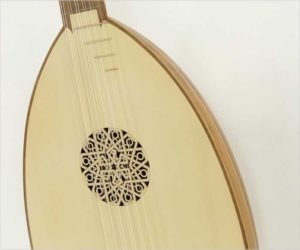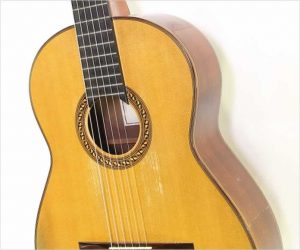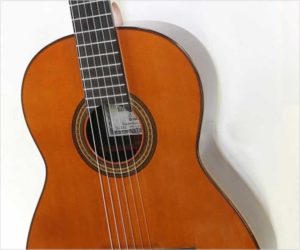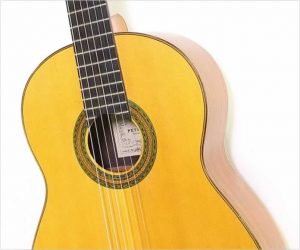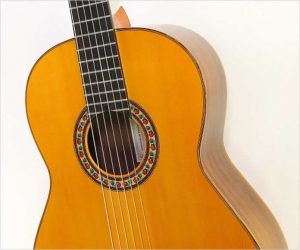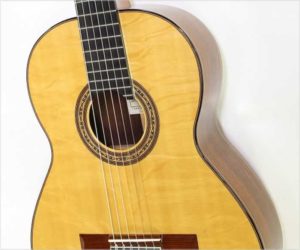This Roosebeck Renaissance lute is a 6 course model, featuring a bowl constructed of 25 fluted Sheesham staves, and with a 600mm scale length. The top is Spruce, while the neck, bowl, nut, bridge, and end pin are built of Sheesham, The peg box is Sheesham and Lacewood. The frets are formed in the traditional manner – tied on – but are nylon line (guitar string) rather than gut.
Nylon
This well used Sergei de Jonge Classical guitar was built during 1998 in de Jonge Toronto shop of Spruce and Indian Rosewood. Sergei de Jonge builds many excellent, professional grade instruments, and he also has taught many other builders. Some already accomplished builders take shorter sessions focusing on areas where de Jonge specializes, particularly French Polish finishing.
This instrument has sold
MORE →The Yamaha GC30A Grand Concert Brazilian Classical reflects the upper end of Yamaha guitar production in a concert grade instrumen,t featuring a pairing of a Red Cedar top and Brazilian Rosewood back and sides.This Yamaha GC30A was built during 1982 at the Yamaha home facility in Hamamatsu, Shizuoka Prefecture and is signed by master luthier Mr. Toshio Kato.
This instrument has sold
MORE →Here we have a Harald Petersen Model C classical guitar, dated to 1971 – this was two years after Harald’s death, this guitar was completed by his sons. The label indicates this, not bearing Harald’s signature – it reads “Ta PH Petersen”. Following the Hauser style, it pairs a Spruce top with Indian Rosewood for the back,sides, bridge and body binding, with Mahogany for the neck and Ebony for the fingerboard.
This instrument has sold
MORE →Here we have a Pedro de Miguel Flamenco Negra guitar, built in Madrid during 2005. The key difference between Flamenco Negra and Classical guitars, aside from the use of Rosewood instead of Cypress for the back and sides – is largely geometry. The neck set on a Flamenco guitar is a bit higher, allowing for low action and the attendant rattle that’s part of the Flamenco sound. Flamenco Negra guitars are becoming more common and often found in the ‘World Music’ context.
This instrument has sold
MORE →Built during 2005, this Oskar Graf classical guitar pairs a bearclaw-figured Sitka Spruce top with Indian Rosewood for the sides, back, headplate and bridge. The neck is Mahogany with an Ebony fingerboard. The nut and saddle are bone, and the other hardware is a set of Graf tuners, hand built by Oskar’s brother, Jorg.
This instrument has sold
MORE →